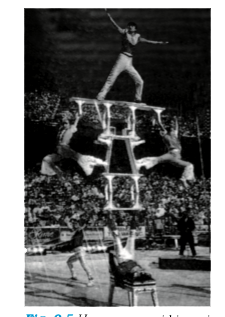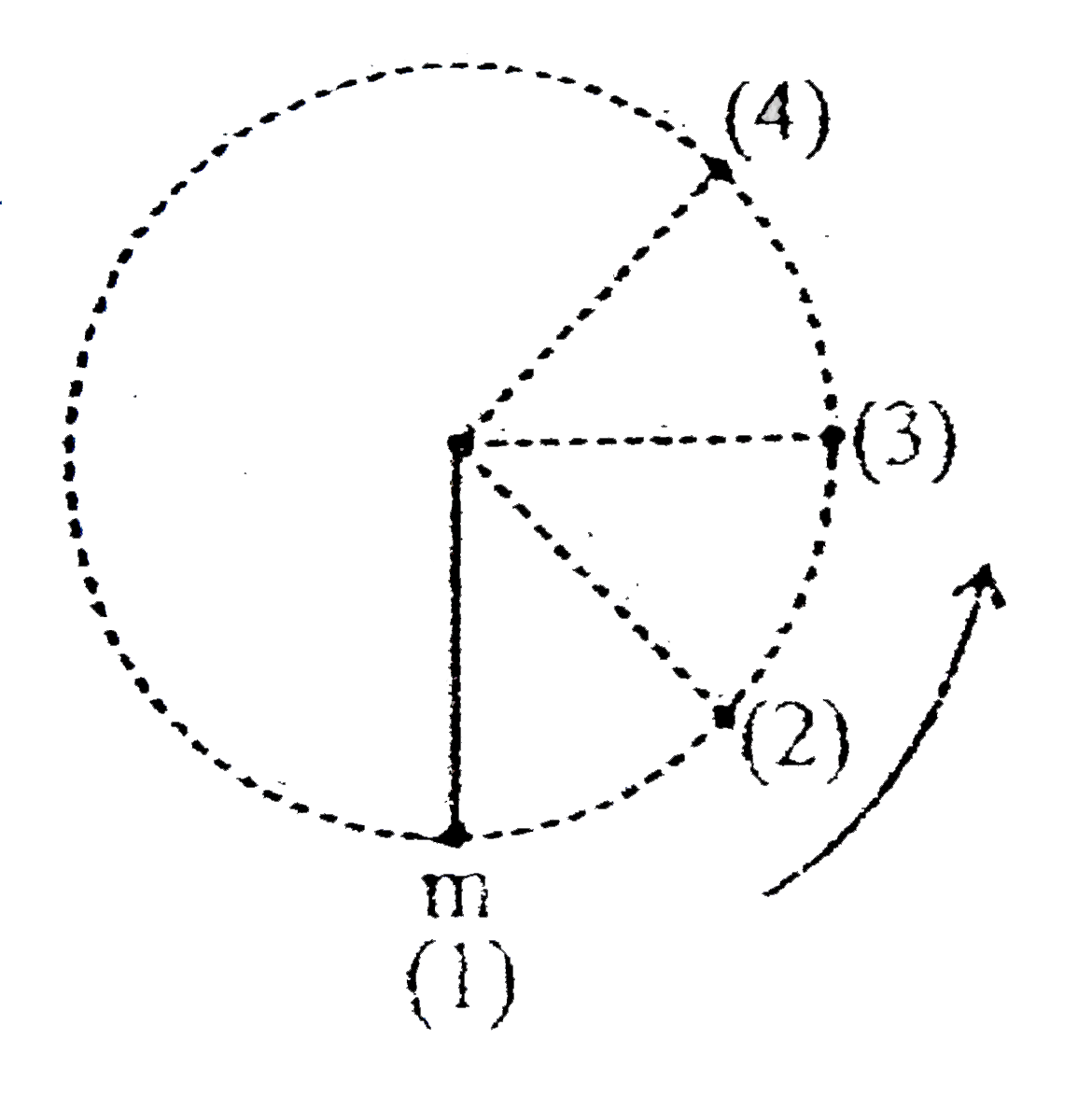In a human pyramid in a circus, the entire weight of the balanced group is supported by the legs of a performer who is lying on his back. The combined mass of all the persons performing the act, and the tables, planks etc. involved is 280 kg. The mass of the performer lying on his back at the bottom of the pyramid is 60 kg. Each thighbone (femur) of this performer has a length of 50 cm and an effective radius of 2.0 cm. Determine the amount by which each thighbone gets compressed under the extra load.
Total mass of all the performers, tables plaques etc. = 280 kg
Mass of the performer = 60 kg
Mass supported by the legs of the performer at the bottom of the pyramid =280−60=220kg
Weight of this supported mass
=220kgwt.=220×9.8=2156N.
Weight supported by each thighbone of the performer =1/2(2156)=1078N.
The young.s modulus Y=9.4×109Nm−2 (compressive)
Length of each thighbone L=0.5m
the radius of thighbone = 2.0 cm
Thus the cross-sectional area of thighbone
A=π×(2×10−2)2m2
=1.26×10−3m2.
The compression in each thighbone
ΔL=[(F×L)/(Y×A)]
=[(1078×0.5)/(9.4×109×1.26×10−3)]
=4.55×10−5m.
Similar Questions
In a human pyramid in a circus, the entire weight of the balanced group is supported by the legs of a performer who is lying on his back (as shown in Fig. 9.5). The combined mass of all the persons performing the act, and the tables, plaques etc. involved is 280 kg and of each person is 60 kg. Each thighbone (femur) of this performer has a length of 50 cm and an effective radius of 2.0 cm. Determine the amount by which each thighbone gets compressed under the extra load.
 View Solution
View SolutionIn a human pyramid in a circus, the entire weight of the balanced group is supported by the legs of a performero who is lying on his back (as shown in Fig. 9.5). The combined mass of all the persons performing the act, and the tables, plaques etc. involved is 60 kg. Each thighbone (femur) of this performer has a length of 50 cm and an effective radius of 2.0 cm. Determine the amount by which each thighbone gets compressed under the extra load.
 View Solution
View Solution
Knowledge Check
- Question 1 - Select One
A man has mass 70 kg and the mass of his wife is 50 kg. The ratio of the inertia of the man to the inertia of his wife is
A5:7B1:2C7:5D1:3 - Question 2 - Select One
The performance of a sales person depends on _____.
Asalary paidBsales incentives paidCsize of the sales teamDability and willingness of the sales person - Question 3 - Select One
The performance of a sales person depends on _____.
AAbility and willingness of the sales personBIncentives paidCSize of the sales teamDTeam leader's attitude
His performance is fairly unsatisfactory.
View SolutionA father has mass 60 kg and the mass of his on is 30 kg . What is the ratio of inertia of the father to the inertia of his son ?
View Solution(a) a person weighs 60 kg on earth. Will his weight increase as he moves to the top of a hill ?
(b) will the weight of person increase at the bottom of a mine ?View SolutionA particle (bob) of mass 1 kg is performing vertical cicular motion. Then :
 View Solution
View SolutionA particle (bob) of mass 1 kg is performing vertical cicular motion. Then :
 View Solution
View Solution

